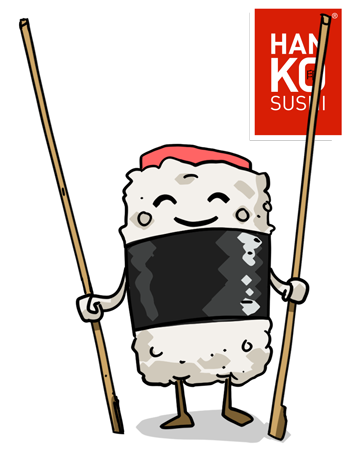Soy


Kikkoman and Hanko Sushi – a long cooperation
Konnichiwa!
The history of Kikkoman goes back to the 1600s, when the company was based in the city of Noda. The city is located near the River Edo, which made raw materials easily available. The river could also be used to transport goods quickly to the city of Edo, as it was then called; it’s now known as Tokyo. Today, Kikkoman has expanded its operations to all over the world, but their factories and the production of soy sauce still operate under the same basic principles.
In Japanese, the word “kikko” refers to the shell of a turtle, while “man” means ten thousand. In Japanese culture, turtles are a symbol of steady growth and perseverance, and according to traditional belief, turtles live for ten thousand years.
he manufacturing of soy sauce is a process with many stages and a long tradition, refined over centuries. In principle, soy sauce is still made in exactly the same way as it was hundreds of years ago; modern technology has been added to the process mainly to speed up various stages. Four basic ingredients are needed to produce soy sauce:
1) wheat
2) soybeans
3) salt
4) aspergillus (a genus of mould fungus used to ferment soybeans)
Combining all these three ingredients results in a dry mixture that the Japanese call koji. Combining koji with a salt and water mixture creates a thick mash called moromi. Moromi is allowed to ferment in special fermentation tanks for several months, after which it is poured over a long length of fabric; when the fabric is squeezed, the actual soy sauce drips out, ready to be collected. The recovered soy sauce is refined and pasteurised, after which it is analysed carefully and finally bottled. After this, the soy sauce is ready to use in cooking in countless different ways. Easy!
Soy sauce is suitable for use with almost any kind of food. In fact, in Japan it is used in practically all kinds of food from ice cream to grilled meat. Soy sauce was originally used with sushi to remove any unpleasant smell from the fish. This is why the Japanese make sure that only the fish touches the soy sauce when dipping their nigiri – the rice itself never comes into contact with the sauce.


Kikkoman and Hanko Sushi – a long cooperation
Konnichiwa!
The history of Kikkoman goes back to the 1600s, when the company was based in the city of Noda. The city is located near the River Edo, which made raw materials easily available. The river could also be used to transport goods quickly to the city of Edo, as it was then called; it’s now known as Tokyo. Today, Kikkoman has expanded its operations to all over the world, but their factories and the production of soy sauce still operate under the same basic principles.
In Japanese, the word “kikko” refers to the shell of a turtle, while “man” means ten thousand. In Japanese culture, turtles are a symbol of steady growth and perseverance, and according to traditional belief, turtles live for ten thousand years.

The manufacturing of soy sauce is a process with many stages and a long tradition, refined over centuries. In principle, soy sauce is still made in exactly the same way as it was hundreds of years ago; modern technology has been added to the process mainly to speed up various stages. Four basic ingredients are needed to produce soy sauce:
1) wheat
2) soybeans
3) salt
4) aspergillus (a genus of mould fungus used to ferment soybeans)
Combining all these three ingredients results in a dry mixture that the Japanese call koji. Combining koji with a salt and water mixture creates a thick mash called moromi. Moromi is allowed to ferment in special fermentation tanks for several months, after which it is poured over a long length of fabric; when the fabric is squeezed, the actual soy sauce drips out, ready to be collected. The recovered soy sauce is refined and pasteurised, after which it is analysed carefully and finally bottled. After this, the soy sauce is ready to use in cooking in countless different ways. Easy!
Soy sauce is suitable for use with almost any kind of food. In fact, in Japan it is used in practically all kinds of food from ice cream to grilled meat. Soy sauce was originally used with sushi to remove any unpleasant smell from the fish. This is why the Japanese make sure that only the fish touches the soy sauce when dipping their nigiri – the rice itself never comes into contact with the sauce.

